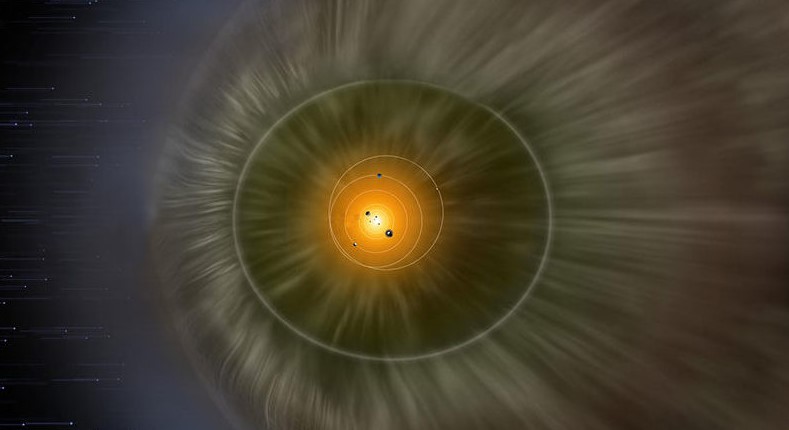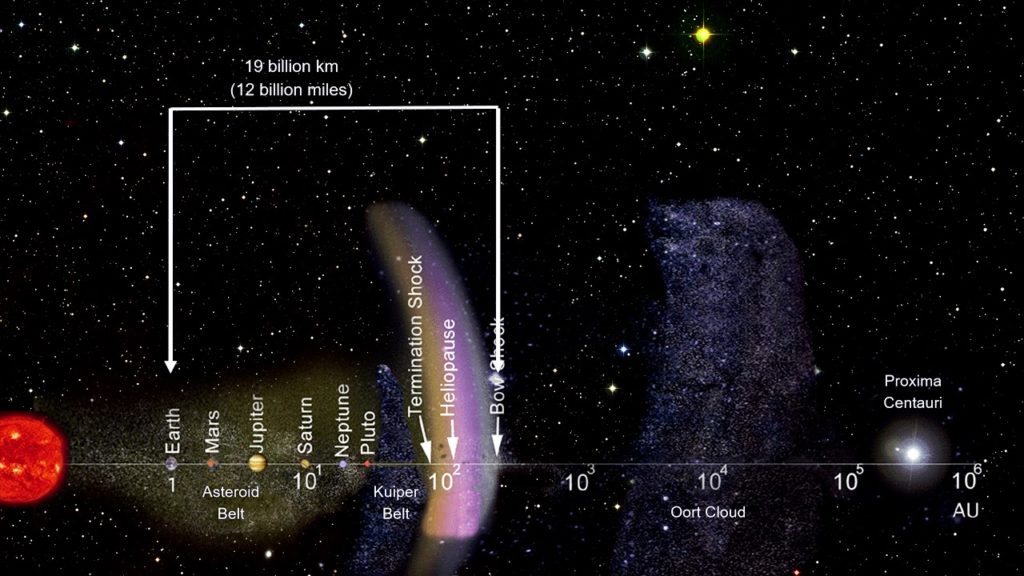Our Solar System Is Surrounded By a Massive Glowing Hydrogen Wall

The New Horizons spacecraft was launched back in 2006 with a different purpose. It had to scan Pluto, which was then considered to be the ninth planet in the solar system. By the time the spacecraft arrived close to Pluto in 2015, the planet was declared a dwarf planet.
What was more incredible than the information on Pluto was what existed deeper into space. NASA did not call back home the probe. Instead, they directed it into the Kuiper Belt. The discovery was incredible, confirming the observations see about 30 years ago by the Voyager spacecraft.
NASA used a UV spectrometer from the Alice spacecraft to read ultraviolet spectrum over time and scientists now believe that what New Horizons saw in its early observations could really be a massive hydrogen wall.
Is That a… Space Wall?
Passing by the last dwarf planet, asteroids and comets, the probe saw a massive wall of hydrogen that surrounded the solar system.
The observation can be seen in the ultraviolet light resulted from a hydrogen wall that envelops the solar system, making it look from outer space like an egg. This wall appears like a shell.
The sun produces ionized particles known as “solar wind,” which extend for about 10 billion miles from the sun and create a bubble (heliosphere) around the solar system.
The theory is that when neutral interstellar hydrogen atoms encounter the bubble, it creates ultraviolet light. The hydrogen atoms that encounter the heliosphere slow down and build up at the end of the solar wind’s reach and this build-up looks like a wall, scattering ultraviolet light differently.
The spacecraft New Horizons still has some tasks to perform. Next year it will start looking for ultraviolet evidence of the wall, and it will continue its mission for the next ten or twenty years to see stranger things deep in space.
For more information, you can find the detailed study on this discovery in Geophysical Research Letters.

0 comments